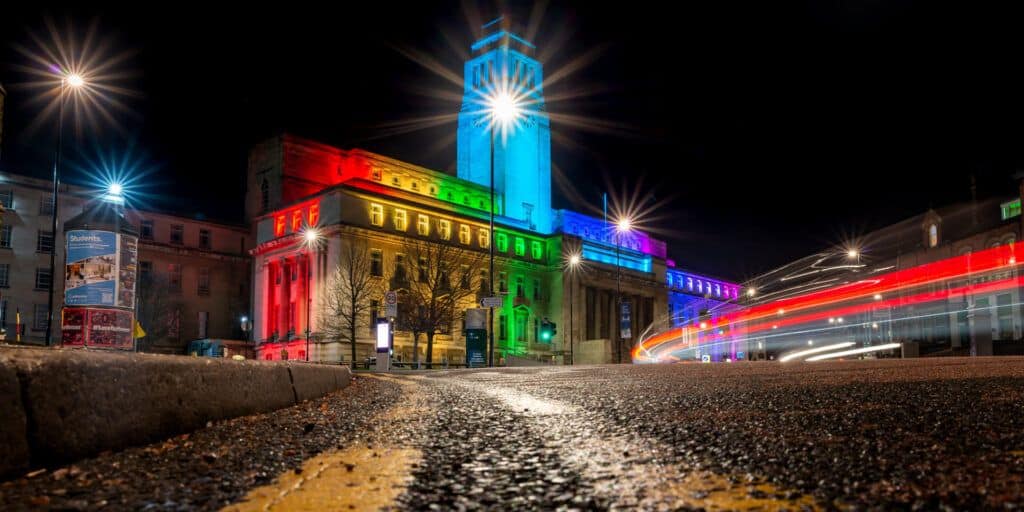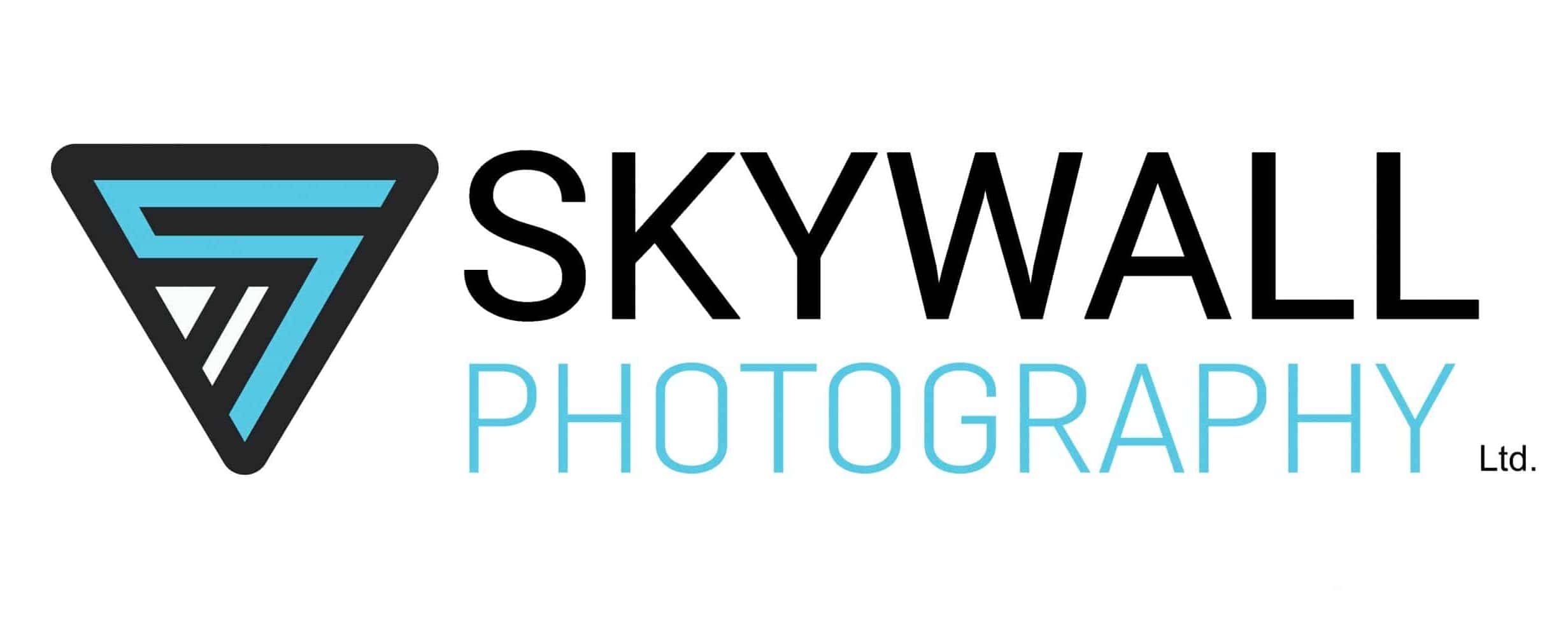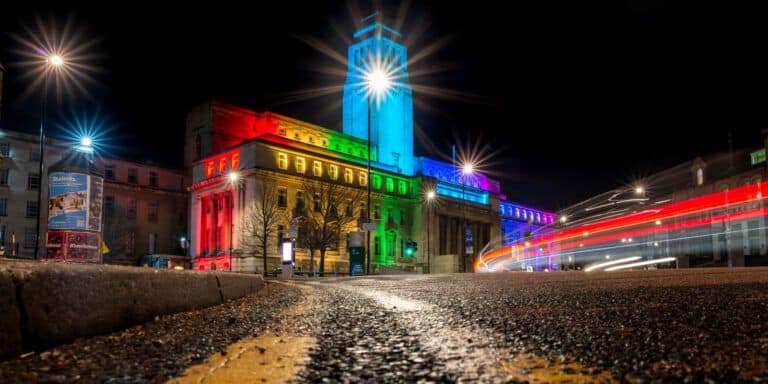How Commercial Photography Can Be Used To Grow Your Business
In today’s competitive business environment, commercial photography is essential for marketing and brand building. As a result, businesses are increasingly turning to professional photographers to create stunning visuals that will entice their target audience and help them stand out in the marketplace. This article explores how commercial photography can be used strategically to grow your business.
Commercial photography offers a variety of ways to promote products, services or brands through images that capture attention and engage with viewers on an emotional level. By leveraging the power of imagery, businesses can leverage visual storytelling to convey their message in a way that resonates with audiences and encourage desired behaviours from potential customers.
When done correctly, commercial photography should make an impactful statement about what sets your business apart and provide tangible results such as increased sales conversions and improved customer loyalty. This article will give readers insight into how they can use commercial photography to successfully market their business and achieve positive outcomes for their bottom line.

Definition Of Commercial Photography
Commercial photography is a term used to describe any type of professional photography created for advertising, promoting, or marketing products and services. It encompasses many types of visual imagery, including product shots, lifestyle photographs, architectural images, food photography, corporate headshots, event coverage and more. This form of photographic art is an effective communication tool in today’s highly competitive business world.
The definition of commercial photography has evolved with advancements in digital technology, allowing for easier access to high-quality images. With this evolution comes greater expectations from clients who want their message communicated clearly and effectively through creative visuals that are eye-catching yet tasteful. Professional photographers must continually strive to meet these demands while also staying ahead of trends to remain relevant within their industry.
In the contemporary marketplace, commercial photography plays a critical role in visually conveying messages and helping businesses stand out from competitors by providing unique perspectives on products and services being offered. By investing in quality photos for use across multiple platforms such as print media, websites, social media campaigns and more, businesses can gain exposure and build brand recognition, ultimately leading to increased sales opportunities.

Benefits Of Using Professional Pictures
Using professional pictures can be beneficial to businesses in a variety of ways. The following are five primary benefits that commercial photography provides:
- Quality Images: Professional photographers produce high-quality images with sophisticated equipment and specialized software. This ensures that the photos look great, regardless of where they appear on your website or social media page. Additionally, they have experience in lighting, angles and other techniques that add visual appeal to their work.
- Cost-Effective: Investing in quality photographs is often more cost-effective than creating them yourself or hiring an inexperienced photographer. By working with a professional photographer, you get access to their knowledge, expertise, and creative vision for what type of photos best fit your brand and message.
- Increased Visibility: Professional images help increase visibility online by ensuring your business stands out from competitors who may not use such services. People tend to remember visuals better than text, so having compelling imagery helps draw attention to your company’s products, services and values, which could result in increased sales.
- Credibility & Trustworthiness: Customers expect businesses to present themselves professionally; using professional photographs can go a long way towards establishing trust between you and potential customers. Having polished images creates an impression that speaks volumes about your commitment to excellence which reinforces the credibility surrounding your brand.
- Versatility: Professional photographers provide flexibility when it comes to delivering content—images can be used across multiple marketing channels, including websites, blogs, emails, brochures, flyers etc., providing endless opportunities for companies to showcase their products or services without spending additional money on advertising or design projects.
Overall, these advantages make investing in high-quality professional images an intelligent decision for any business looking to promote itself effectively while still being cost-effective. With the right photographers on board, businesses can create memorable visuals that capture the essence of their unique offerings and attract new customers simultaneously.

How To Choose The Right Photographers
When it comes to commercial photography, choosing the right photographers is essential. After all, they will be responsible for capturing your business’s vision and products in a visually appealing manner that resonates with customers. To ensure you get the best photographer for your needs, there are several key considerations when comparing professionals.
The first step in selecting a photographer is to review their portfolio of work. This allows you to see how each professional handles different lighting conditions, angles, compositions and subject matters. Additionally, take note of any special effects that may have been used, such as filters or post-processing techniques. It also helps if the portfolios contain images from previous shoots so you can understand how they captured particular moments in time.
Next, consider the experience level of the photographer. A more experienced photographer likely has a better understanding of how to capture good quality photos regardless of the situation at hand compared to someone who is just starting out. Furthermore, look into their credentials, such as awards won or publications featured in as these can give an indication of the standard of service provided by them.
| Experience Level | Portfolio Quality | Photographer Credentials |
|---|---|---|
| Highly Experienced | Varied Work Samples | Awards & Publications Won/Featured In |
| Moderately Experienced | Mixed Quality Images | References From Other Clients/Industry Professionals |
| New Photogrpaher | Limited Portfolio Examples | No Awards Or Published Content Yet |
Finally, pricing should also be considered when comparing photographers; after all, this plays an important role in setting aside funds for other aspects related to running a successful business, such as marketing campaigns or product development initiatives. However, do not let price be your only factor as sometimes paying slightly above market rates can result in higher quality photographs which help boost sales over time.
By considering factors like experience levels, portfolio samples and affordability before committing to one photographer, businesses can rest assured knowing they have chosen the right person for their commercial photography needs and increase their chances for success going forward.
Preparing For A Photoshoot
Adequate preparation is essential for a successful commercial photoshoot. Pre-shoot planning and preparations can help ensure the best project outcome regarding quality, time management, and cost-effectiveness. It is essential to consider all aspects that might be needed before commencing a photoshoot.
The first step in preparing for a photo shoot is selecting an appropriate location. This should include available light sources, background options, noise levels, temperature control, and other considerations related to the shoot’s objectives. Additionally, it is necessary to prepare any props or sets that may need to be used during the session. Selecting the right wardrobe ahead of time will also ensure maximum efficiency throughout the duration of the shoot day; this includes choosing accessories that are complementary but do not distract from the main focus of the images.
Lighting setup forms another critical element in pre-shoot preparations. Different types of lighting and techniques can be used depending on the desired results; these could range from natural sunlight and artificial lights to reflectors and diffusers. Knowing which lighting will work best for each particular shot is critical to achieving optimal image quality. Furthermore, having a backup plan ready in case of technical difficulties with either equipment or power supply can save valuable time when conducting a commercial photo shoot.
Having considered all elements involved in setting up a professional photoshoot, businesses have an advantage over competitors who overlook these steps towards achieving high-quality images representative of their brand identity. A well-planned photoshoot allows businesses to gain greater control over how they present themselves visually and helps create more effective marketing strategies that meet their specific needs and goals without compromising on quality standards expected by clients and customers alike.
Tips For An Effective Shoot
A successful photo shoot begins with proper planning and preparation. An effective shoot requires more than just taking pictures; it involves understanding picture composition, light positioning, and how to bring an idea to life in a photograph. Here are some helpful tips for achieving the best results from a commercial photography session:
- Picture Composition – Think through the design of each photo before shooting by considering angles, background elements, framing objects, and other visual components that will contribute to telling your story in the image.
- Light Positioning – Proper lighting can set the mood of a scene or enhance particular features in a photograph. Consider natural sunlight and artificial light sources when deciding on the placement and direction of lights during a shoot.
- Photoshoot Planning – Before starting any project, discuss expectations and goals with clients beforehand so everyone is on the same page about what needs to be achieved during the shoot. This includes assigning tasks among team members if necessary and having supplies ready ahead of time.
It’s important to take these steps seriously since they form the foundation upon which the entire photoshoot depends—allowing you to capture stunning images while saving precious time and money along the way. The next step after setting up your shots is post-shoot editing and retouching, where you’ll apply further enhancements such as colour correction or adding special effects to create polished final images that meet your client’s vision.
Post-Shoot Editing And Retouching
After all the hard work of planning and executing a successful commercial photography shoot, post-shoot editing and retouching are essential to ensure your images are ready for marketing. This stage can involve photo editing tools such as digital manipulation to alter colours, contrast, size and shape. Retouching techniques may also remove blemishes or other imperfections from the image. Colour correction is essential when dealing with mixed lighting sources, and web optimization helps ensure pictures are displayed correctly on different screens and devices.
This stage aims to perfect each photograph so it looks its best before being shared with potential customers or clients. It can take some practice to become skilled at these processes, but once mastered, they will help you easily create superior-quality photos every time. Additionally, specific software like Adobe Photoshop gives you access to professional-level tools that enable greater control over the finished product.
By taking advantage of post-shoot editing and retouching services, businesses can benefit significantly since high-quality photographs give them a competitive edge when marketing their products or services online. They can also ensure viewers see their brand in the best possible light while gaining trustworthiness through well-presented visuals.
Utilizing Different Types Of Photographs
Commercial photography allows businesses to showcase their products and services creatively. Different types of photographs can be used for various purposes, from headshots to lifestyle shots, product shots to aerial shots and even event shots. Each type of photograph has unique qualities that can help your business stand out and create an impactful impression on potential customers or clients.
Headshots are perhaps the most popular type of commercial photography businesses use today. These photos provide viewers with a clear understanding of who is behind the brand; it helps them connect better with you and understand what sets you apart from other businesses. Headshots also have the added benefit of adding professionalism and credibility to your company’s image.
Lifestyle shots capture natural moments between people interacting in everyday situations related to your business or industry. This type of photography allows brands to tell stories through visuals, creating an emotional connection with viewers and leading to more engagement and sales opportunities. Product shots focus solely on showcasing a specific item or range of items without getting distracted by unnecessary elements like people or movement. Aerial shots are becoming increasingly popular due to advances in drone technology; they offer spectacular views from above and give companies an alternative angle when advertising their offerings. Event photographs document special occasions such as conferences, seminars, workshops, etc., while providing stunning images that can be shared via social media and other digital platforms.
Different types of commercial photography should all be considered when planning marketing campaigns – each one has its purpose but ultimately helps build awareness surrounding your company and grow your customer base over time. Showcasing products and services innovatively encourages people to take notice and learn more about what you have to offer, leading towards successful outcomes for both parties involved.
Showcasing Your Products And Services
Using commercial photography to showcase your products and services is an invaluable tool for growing your business. It can be used to display the quality of your offerings effectively, tastefully promote them, and draw attention from potential customers.
A great way to start using this medium is by creating a product or service showcase that highlights what you have to offer. This will give viewers an overview of everything available and help them decide which products they want to purchase. To do this, it’s best to create an engaging visual presentation with high-quality images that capture each item’s essence.
| Product Display | Service Promotion | |
|---|---|---|
| 1 | Highlighting Quality | Creating Engaging Visual Presentations |
| 2 | Drawing Attention From Potential Customers | Promoting Products In A Tasteful Manner |
| 3 | Informing Viewers Of Available Offerings | Displaying The Quality Of Your Services |
Using commercial photography for product and service promotion can greatly benefit any business looking for growth. Not only does it allow businesses to represent their offerings visually, but it also provides a platform for displaying their unique brand identity through creative visuals and storytelling. By utilizing these methods strategically, businesses can tap into new customer bases while solidifying current relationships with existing ones.
Capturing Your Brand Identity
Commercial photography can be used to communicate your brand identity effectively and engagingly. Brand identity is the perception of a customer about what makes a business unique and memorable, so it’s essential that customers can connect with your message visually. Photography is a powerful medium for conveying this message because it lets you capture the essence of your product or service while giving customers a glimpse into what makes them unique.
Image branding is another key benefit of commercial photography, which involves creating pictures that represent your company’s core values and mission statement. This type of photography will help you create an image that accurately portrays who you are and what you stand for. It also helps build trust between you and potential customers by demonstrating the quality and consistency of your products or services through visual cues.
Brand image is one of the most critical aspects of marketing, so it’s essential to use professional-quality photographs when promoting yourself online or in print media. Professional photos will showcase the best features of your products or services and be used alongside other elements such as typography, logos, and design elements to create a cohesive brand message across all platforms. Utilizing commercial photography ensures that every aspect of your promotional materials reflects the highest standards possible, helping to ensure maximum impact on potential clients or customers.
By using commercial photography strategically, businesses can effectively convey their brand identity and establish themselves as industry leaders in terms of innovation and professionalism. As part of a comprehensive brand representation strategy, these images should be utilized online and offline to maximize exposure and engagement with target audiences. With careful curation, businesses can position themselves at the forefront by leveraging high-quality visuals for their overall marketing campaign. Transitioning into enhancing website design: By utilizing creative imagery along with sound web design principles, businesses can enhance their website presence significantly while boosting visibility among current and prospective customers alike.
Enhancing Your Website Design
Enhancing your website design is an essential part of modern business growth. Utilizing commercial photography to optimize the visuals on your site can result in increased engagement and a more attractive aesthetic that potential customers will appreciate. Here are three ways you can use custom graphics, images, and videos to enhance your website design:
- Create custom graphics for every page on your website. This will give each page a unique feel and help visitors navigate your content more easily.
- Use high-quality images to draw attention to key sections of the site or highlight important messages. Professional photos add a level of professionalism to the overall look and feel of the website.
- Optimize the size and resolution of all photos used on the site as this can greatly improve loading times, reducing bounce rates.
Using professional photography services provides several advantages regarding enhancing website design. Not only do they produce excellent quality visuals, but they also offer valuable advice regarding how best to utilize them within web design optimization. Moreover, hiring experienced professionals ensures that copyright issues surrounding usage rights are appropriately handled, reducing potential legal exposure from using unlicensed material online. By leveraging commercial photography services for website enhancement projects, businesses have access to highly skilled practitioners who understand what works visually for websites today and how best to incorporate these elements into their sites for maximum impact.
Increasing Your Reach On Social Media
To further enhance your website design, it is important to consider strategies for increasing your reach on social media. Social media has become an essential platform for marketing and promotion in the current digital era. With its vast audience potential and ability to target specific demographics, businesses can use social media to drive growth and expand their customer base.
The first step towards successful usage of social media is creating content that resonates with users. This means content should be tailored specifically to the interests of individual platforms or audiences while also providing useful information and resources related to your business’s products or services. Additionally, using high-quality images taken by commercial photography professionals can help create engaging visuals that will draw attention from viewers while also accurately representing your brand identity.
Furthermore, leveraging existing relationships or networks within the industry can be beneficial in growing your presence on social media. Creating partnerships with influencers who have large followings on these platforms can open up opportunities for more exposure through collaborations such as sponsored posts or giveaways. Alliances with other brands may also provide additional chances for cross-promotion between entities which could lead to increased followership over time when done strategically.
Social media provides numerous possibilities for reaching out to customers both locally and globally if utilized correctly. Through thoughtful content creation along with strategic collaborations and alliances, you can increase engagement levels among users while also improving visibility across various social networks – ultimately leading to greater reach growth in the long run. Strategies for maximizing exposure are discussed in detail in the subsequent section…
Strategies For Maximizing Exposure
When it comes to commercial photography, there are many effective strategies for maximizing exposure. Utilizing social media is an excellent way to showcase a business’s products or services and attract potential customers. Social media platforms such as Facebook, Instagram, and Twitter offer millions of users the opportunity to connect with each other and businesses all over the world. By creating content that resonates with viewers and posting professional photos on these sites, companies can easily increase their reach while establishing brand identity.
In addition to utilizing online marketing tools, print advertisement also plays an important role in raising awareness about a company’s offerings. Whether through magazines, newspapers, brochures or flyers – high-quality images make a lasting impression on customers. Businesses should aim to create visually appealing pieces that will draw readers in and keep them engaged. Professional photography provides vivid imagery that stands out from competitors’ advertisements which helps raise customer loyalty rates and boost sales.
Finally, customer testimonials are one of the most powerful ways to build trust among consumers. Companies should consider incorporating real customer stories into their advertising campaigns by using compelling visuals like photographs to bring those stories alive for potential buyers. Not only does this help build relationships between businesses and their customers but it also allows companies to gain credibility within their industry.
Utilizing Customer Testimonials
Customer testimonials have become an invaluable asset for businesses of all sizes when it comes to increasing the reach and reputation of their products or services. Testimonial photography, specifically, can be a powerful tool for conveying customer satisfaction in both written and visual formats. By incorporating business reviews from satisfied customers into commercial photographs, companies are able to capture valuable content that promotes trustworthiness and reliability.
The following table outlines how utilizing customer testimonials through professional photography can help increase brand awareness:
| Benefit | Description |
|---|---|
| Trustworthy Content | Customers viewing images of other people enjoying a product/service generates high levels of trust in potential buyers. |
| Increases Reach & Awareness | Having photos with customer reviews increases visibility on social media platforms as well as print advertisements. |
| Boosts Reputation | Professional quality photographs featuring positive comments enhances the company’s image and helps grow its reputation over time. |
Utilising professional photography along with authentic customer reviews creates engaging visuals which resonates more deeply than traditional advertising methods alone. This type of content also allows brands to demonstrate their commitment to satisfying customers by showcasing real-life experiences with their products or services. Moreover, including this type of testimonial content gives potential consumers confidence in the quality they will receive if they make a purchase from said company.
By combining commercial photography with customer feedback, businesses not only create visually appealing marketing materials but also establish credibility and build loyalty among current and prospective clientele alike. Publishing print advertisements featuring these types of images is guaranteed to draw attention and entice readers to learn more about the business’s offerings.
Publishing Print Advertisements
Print advertising is a viable and cost-effective way for businesses to reach their target market. Through print media, such as magazine ads, newspaper ads, and commercial printing, companies can get their message out to the public quickly and efficiently. Print adverts provide an opportunity for businesses to showcase their brand in a creative and effective way. By creating eye-catching visuals with bold text, businesses are able to create powerful marketing campaigns that capture the attention of potential customers.
When using print advertising, it is important to be strategic about how you use your resources. Companies should take into consideration the size of their target audience when designing print materials. Additionally, they should research what types of publications would be most beneficial for them based on their products/services. For example, if a company specializes in selling pet supplies online, then they may want to focus on running advertisements in magazines geared towards pet owners or retailers who specialize in pet products.
By carefully selecting which publications best fit their needs and budgeting accordingly, companies can maximize the impact of their print advertising efforts while ensuring they receive desired results from this medium. Furthermore, by tracking these results over time via analytics or surveys from consumers exposed to the print campaign, businesses can evaluate if this method was successful at achieving its goals and adjust strategies as needed going forward.
Analyzing Results And Measuring Success
Having published print advertisements, businesses now need to analyze the results and measure their success. This involves assessing the impact of campaigns on key performance indicators (KPIs) such as sales growth or market share. By gathering data metrics from various sources, companies can gain insights into which strategies are working and which ones could be improved. Here are some steps for analyzing commercial photography results and measuring success:
- Monitor campaign performance using KPIs that accurately reflect desired outcomes
- Analyze customer feedback through surveys or focus groups to gauge effectiveness
- Compare pre/post campaign data to determine if objectives were met
- Examine audience demographics and reach to get a better understanding of target markets
- Track ROI (return on investment) over time to assess profitability
Commercial photography is an effective way to showcase products and services in order to increase brand awareness and attract new customers. Companies should use data metrics as well as qualitative measures like customer experience ratings to evaluate how successful their advertising initiatives have been. An impact assessment helps organizations identify areas where they can make improvements or even adjust certain aspects of their business model for increased efficiency. Through careful analysis of results, companies can gain valuable key insights into how best to optimize their marketing efforts for maximum returns.
Frequently Asked Questions
What Type Of Camera Should I Use For A Commercial Photography Shoot?
When it comes to commercial photography, the type of camera used is critical. It can be a determining factor in the quality and depth of your photographs, as well as how much time you spend editing them afterwards. Selecting the wrong camera for a shoot could result in poor results that won’t reflect positively on your business or its products. Therefore, it’s essential to consider what type of camera will best suit your needs before undertaking a commercial photography shoot.
The right kind of camera depends heavily upon what you plan to photograph and how you plan to use those images afterward. DSLR cameras are usually recommended for most commercial shoots due to their versatility—they offer manual control over exposure settings like aperture and shutter speed, allowing photographers greater flexibility when shooting different types of scenes and lighting conditions. Mirrorless cameras also work very well for commercial photography because they tend to weigh less than bulky DSLRs yet still feature advanced imaging technologies such as large sensors with high megapixels counts and fast autofocus systems. However, if budget constraints are an issue then point-and-shoot digital cameras may suffice depending on the level of detail needed from the shot.
Ultimately though, selecting a camera should be based more on personal preference rather than price alone; after all, every photographer has their own style when behind the lens which means certain features are better suited than others. A good idea would be to rent out various models first so that you can feel comfortable using them during the actual shoot; this will help ensure that you get great results no matter what type of photography project you have planned!
What Is The Best Way To Make Sure I Get The Most Out Of My Commercial Photography Shoot?
When it comes to commercial photography, the best way to make sure you get the most out of your shoot is through pre-planning and preparation. Knowing what type of shots you need before the day of the shoot can help ensure that everything runs smoothly and efficiently during the actual photo session. Additionally, having a good understanding of shooting techniques can go a long way in making sure each image looks professionally polished. This includes setting up adequate lighting for each shot as well as experimenting with different angles and perspectives.
In addition to knowing how to use equipment correctly, renting additional pieces of equipment may be necessary depending on the scope of the project. If done right, this could add an extra layer of depth and detail to photos that would otherwise not have been possible without these additional items. Furthermore, post-production work such as editing should also be factored into any commercial photography project – especially when working with clients who expect high quality images they can use immediately after delivery.
Hiring a professional photographer or team who are knowledgeable in all aspects listed above can ultimately save time and money while still delivering top notch results; however, if cost is a factor then do some research beforehand about which cameras, lenses, accessories and software will suit your needs best so you can maximize efficiency throughout the entire process from start to finish. With proper planning and execution, commercial photography shoots can result in stunning visuals that bring value to businesses big or small – allowing them to stand out from their competition with creative imagery that resonates across various platforms.
Are There Any Special Skills Or Software Needed For Post-Shoot Editing And Retouching?
Post-shoot editing and retouching are essential for commercial photography. This process can be done either manually or with the help of photo-editing software, depending on the desired outcome. Regardless of the method used, post-shoot editing and retouching have become increasingly important in order to create a polished product that will leave a lasting impression on clients.
Retouching software has been developed specifically for commercial photography editing and image retouching. The tools available enable photographers to make adjustments quickly while maintaining an aesthetic look. Additionally, these programs provide features such as color correction and basic manipulation which allow users to produce quality images at an efficient rate.
For those who prefer manual processing, there are several techniques that can be employed including contrast adjustment, dodging and burning, sharpening, noise reduction and more. When used together in combination with retouching software, these methods yield impressive results that will enhance any commercial portfolio. Therefore when utilizing commercial photography it is essential to consider both manual post-shoot editing techniques as well as specialized software solutions in order to maximize efficiency without compromising quality.
How Can Commercial Photography Help Me Target A Specific Demographic?
Commercial photography is a powerful tool for targeting a specific demographic. By leveraging different types of photo shoots, marketing strategies can be tailored to reach the desired audience and increase brand awareness. With careful planning and execution, commercial photographs can engage an audience in ways that other mediums cannot achieve.
To begin the process of demographic-targeting with commercial photography, one must first establish their target market’s core values and needs. This helps determine what type of visual content will best resonate with them. Once this has been established, it is important to plan out creative ideas for each photo shoot accordingly. It is also essential to consider any relevant cultural contexts when creating these concepts in order to capture the attention of your intended demographic accurately.
Finally, post-shoot editing and retouching may involve specialized software or techniques depending on the individual project’s requirements. As such, engaging experienced professionals who possess knowledge in digital imaging technology may prove beneficial in achieving a high quality outcome from your campaign photos. When executed correctly, commercial photography can help create memorable experiences that drive engagement amongst targeted demographics and raise brand awareness simultaneously.
What Is The Most Cost-Effective Way To Use Commercial Photography?
When considering the most cost-effective way to use commercial photography, budgeting and marketing strategy are key components. A business owner should take into account several factors when planning a photo shoot, such as the purpose of the photos, the target audience, and how many images will be needed. These considerations help determine which type of photographer is best suited for their needs and what should be included in the project scope.
Commercial photographers have a wide range of skillsets that can be utilized depending on the goal of a particular photoshoot. For example, if the aim is to create promotional materials for print or digital platforms, then an experienced professional with experience in product branding may be more suitable than someone who specializes in landscape photography. Additionally, understanding how much time and resources need to be allocated for each stage of production can help businesses stay within their budget while maximizing results from their photo shoot.
Finally, it’s important to evaluate all potential options before deciding upon one solution as this will provide greater insight into where funds should be allocated to get maximum return on investment. With careful consideration taken prior to any session taking place, business owners can rest assured knowing they are making an informed decision about their commercial photography project that allows them to maximize impact at minimal costs.
Conclusion
Commercial photography can be a powerful marketing tool for businesses. It helps to increase visibility and demonstrate the quality of products or services in an engaging way. Businesses should consider investing in professional commercial photography, as it has the potential to attract more customers and help them reach their target audience.
When selecting equipment and software for post-shoot editing and retouching, business owners should take into account the intended use of the images – whether they are being used online or in print materials. With careful planning and strategic execution, businesses can make full use of any resources available to create compelling visuals that will captivate their target market.
Ultimately, commercial photography is about creating beautiful content that communicates your brand story with clarity and impact. A well-executed campaign will enable businesses to build relationships with customers through effective visual storytelling, helping to boost sales and grow their customer base over time.







